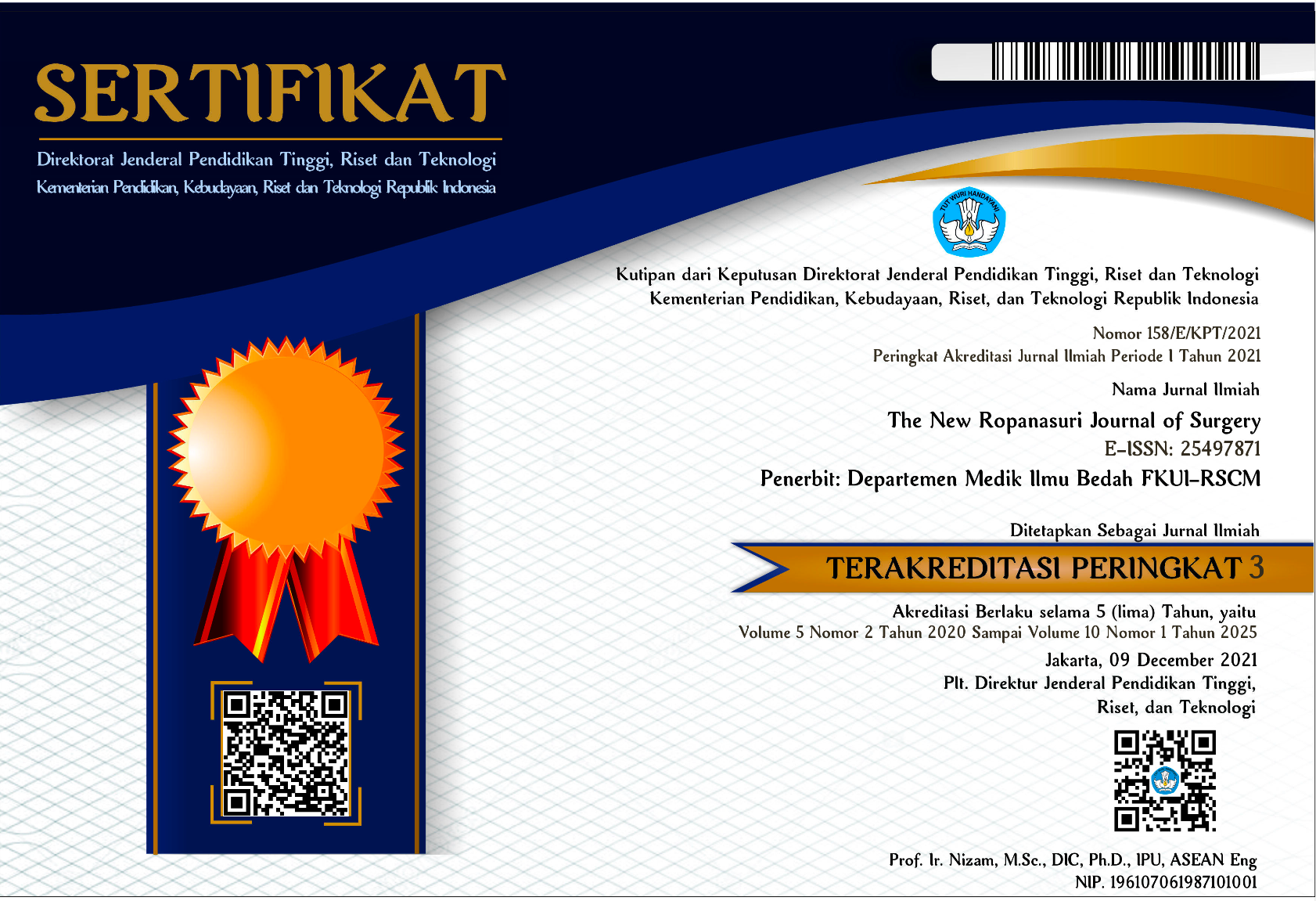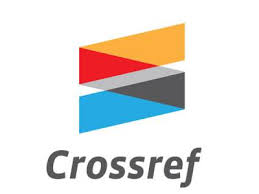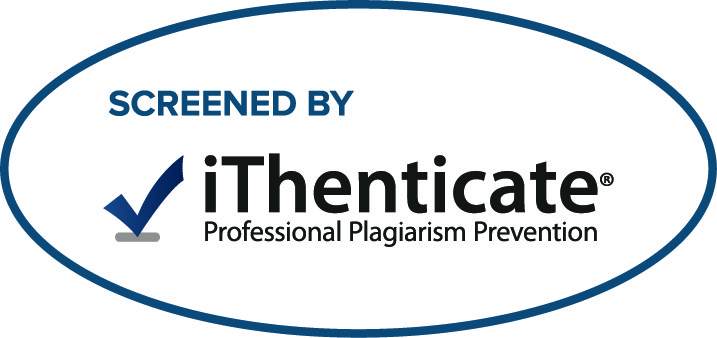Abstract
Introduction. Skin cancer is one of many kinds of cancer which incidence increases globally. Basal cell carcinoma (BSC) and squamous cell carcinoma (SCC) are the most common prevalence of non–melanoma skin cancer, and also are the most common cancer among skin cancer. The main therapy for such skin cancer is wide excision within its safety margin added by adjuvant therapy. Despite adequate therapy, people with skin cancer still have a risk of recurrence. This study assesses the prognostic factors of recurrence among people with non–melanoma skin cancer who underwent wide excision surgery. Method. This study was a retrospective cohort with survival analysis. The patient's data who underwent wide excision surgery were from Perhimpunan Ahli Bedah Onkologi Indonesia (PERABOI)registry and medical record from Oncology Surgery Division in RSCM from January 2012–December 2015. Data selection was done based on inclusion and exclusion criteria. Results. There were 187 patients with non–melanoma skin cancer who underwent wide excision surgery; the recurrence was detected on 15% of the case. Most of the patients were ≥45 years old with the most common histopathological feature of the skin cancer was basal cell carcinoma. We did a survival analysis with Cox regression and the result was previous history of skin cancer (RR 6.903; 95% CI 2.925–16.292), perineural invasion (HR 3.818; 95% CI 1.561–9.340), location of the lesion (HR 0.071; 95% CI 0.022–0.228), and size of the tumor (HR 1.842; 95% CI 1.244–2.729) was the factorsthat increased recurrence. Conclusion. History of previous skin cancer, perineural invasion, location of the lesion, and size of the tumor were the prognostic factors for recurrence among patients with non–melanoma skin cancer who underwent wide excision surgery
Recommended Citation
Pratama, Dennis William and Kurnia, Ahmad
(2019)
"Wide Excision of Non–Melanoma Skin Cancer at dr. Cipto Mangunkusumo
General Hospital, 2012–2015: Recurrence and Prognostic Factors,"
The New Ropanasuri Journal of Surgery: Vol. 4:
No.
1, Article 7.
DOI: 10.7454/nrjs.v4i1.81
Available at:
https://scholarhub.ui.ac.id/nrjs/vol4/iss1/7













